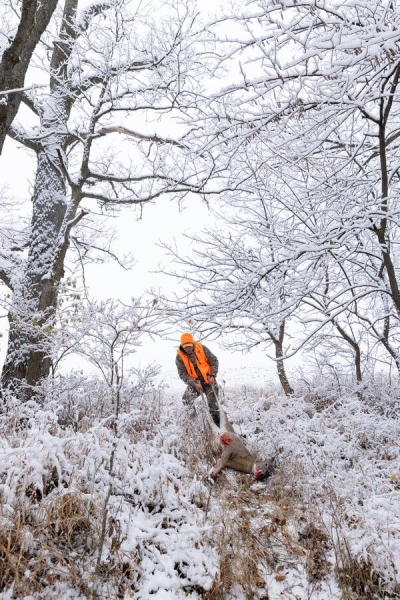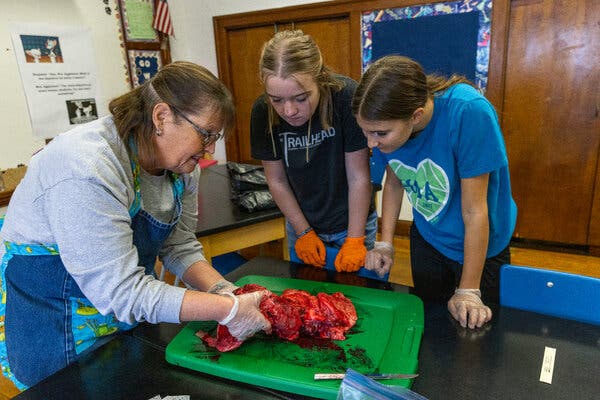A Missouri high school program teaches students to take freshly killed animals from the field to the classroom and into the kitchen.
Photographs by Katie Currid
Text by Mark Josephson
Katie Currid followed students in Maysville High School’s farm-to-table course in 2022 and 2023.
At Maysville High School in Maysville, Mo., population 1,100, classes can be a little tough for the squeamish. Course work can involve assigned reading and algebra, but also a serious amount of blood and guts.
In 2022, the high school, an hour’s drive north of Kansas City, added an elective farm-to-table course run by a family and consumer science teacher, Amy Kanak, who works with an agriculture teacher, Brandi Ellis. Students were already learning to harvest and process livestock and wild game in their agriculture classes, and dissect the organs in science classes. The new course gives them the opportunity to cook meals using the harvested meat, a logical conclusion to the hard work of students in other classes. Ms. Kanak provides instruction on the tail end of the nose-to-tail process, in meal prepping, yield, budgeting and bulk cooking.
But it all starts with the most difficult and messiest part: culling animals and breaking them down. For many students, it’s their first time holding a knife and butchering. Ms. Kanak hopes that students will finish her course with an understanding of where their food comes from.
Ms. Ellis, who finds the classes to be vital in a time of rising grocery bills, said, “It forces them out of their comfort zone a little bit.”

Garrett Bray, then a senior at Maysville High School, pulling a freshly shot doe out of the forest in 2022 on his family’s property. Garrett learned hunting from his father and has been hunting from a young age.
Thank you for your patience while we verify access.
